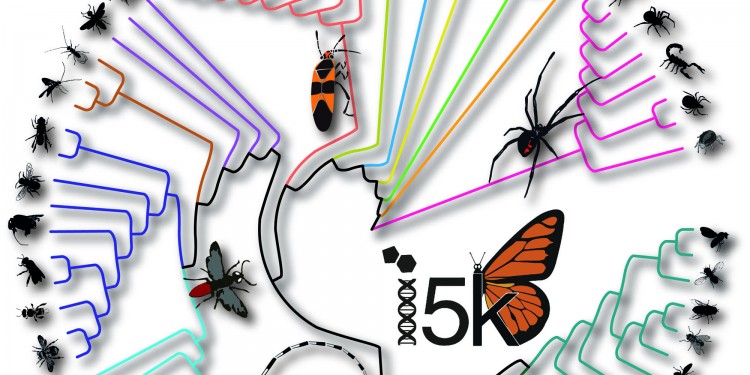
Researchers reconstruct 500 million years of insect evolution
Arthropods, a group of animals including next to insects also spiders or crustaceans, make up the most species-rich and diverse group of animals on Earth, with numerous adaptations that have allowed them to exploit all major ecosystems. However, what genetic mechanisms are responsible for their great evolutionary success? A team of international researchers studied now these species and tracked the evolutionary origin of key adaptations. “We could, for the first time study an extremely long time scale of 500 million years at unprecedented resolution. It was exciting to disentangle the various signals underlying adaptation, which takes place through mutations on a gene level as well as a sub-genic level in the form of rearrangements of smaller modules, called protein domains. It is stunning to see how evolution uses so many mechanisms to create novel functions, phenotypes and morphologies just by rewiring or new combinations of existing material”, says co-author Elias Dohmen from the Institute for Evolution and Biodiversity at Münster University.
Arthropods play vital roles in the healthy ecology of our planet as well as being both beneficial and detrimental to the success of humankind through pollination and biowaste recycling, or destroying crops and spreading disease. The evolutionary innovations of insects and other arthropods are as numerous as they are fascinatingly wondrous, from terrifying fangs and stingers to exquisitely colored wings and ingenious feats of engineering. DNA sequencing allows us to chart the genomic blueprints underlying this incredible diversity that characterizes the arthropods and makes them the most successful group of animals on Earth. An international team of scientists, including researchers from the University of Münster, report in the journal “Genome Biology” the results from a pilot project to kickstart the global sequencing initiative of thousands of arthropods.
Comparative analyses across 76 species spanning 500 million years of evolution reveal dynamic genomic changes that point to key factors behind their success and open up many new areas of research, as for example new approaches related to agriculture or medicine. “This project has generated a wealth of data that will be extremely useful for insect biologists in the years to come”, emphasises first author of the study Dr Gregg Thomas of the Indiana University. “For example, using these data we are able to identify the point in time where new gene functions emerge during the course of insect evolution.”
Background and future goals:
The i5k project, an initiative to sequence and annotate the genomes of 5000 species of insects and other arthropods, was launched in 2011. From the outset, the project aimed to develop new genomic resources for understanding the molecular biology and evolution of arthropods. To kickstart the i5k, a pilot project was launched at the Baylor College of Medicine, USA, led by Dr Stephen Richards.
More effective and cost-efficient DNA sequencing technologies mean that new ambitious initiatives are already underway to sequence the genomes of additional arthropods. These include the “Global Ant Genome Alliance” and the “Global Invertebrate Genomics Alliance”, as well as the “Darwin Tree of Life Project” that is targeting all known species of animals in the British Isles, and the global network of communities coordinated by the Earth BioGenome Project (EBP) that aims to sequence all of Earth’s eukaryotic biodiversity. “The completion of the i5k pilot project therefore represents an important milestone in the progress towards intensifying efforts to develop a comprehensive genomic catalogue of life on our planet, the EBP’s moonshot for Biology”, states Stephen Richards of Baylor College of Medicine and University of California Davis.
However, even if all life on earth would be sequenced, there are more questions to address. Inferring links between changes in gene content and the evolutionary success of different groups of arthropods is not a straightforward task. The most confident examples are for gene families associated with the production of specific materials such as silk or venom, or with characterized physiological functions such as taste or smell. However, the functions of many gene families remain largely unknown, and difficult to infer. Moreover, new functions often emerge through the rearrangement of existing genes. This emphasizes the need for future research to investigate gene function in different arthropods, made possible by genomic resources produced through initiatives like the i5k. To be able to draw conclusions about complex biological interrelations it is important that researchers from different fields work together as happened in this study.
Funding:
Among others, the study was financed by the German Research Foundation (DFG, Deutsche Forschungsgemeinschaft)
Original publication:
Thomas et al. (2020) Gene content evolution in the arthropods. Genome Biology. DOI: 10.1186/s13059-019-1925-7
